 The big news at the outset of the third season for the Kingston St. Lawrence Base Ball Club in 1874 is that they settle their unhappy relations with the local cricket club to a certain degree. An announcement in the Daily News on 20 May 1874 declares:
The big news at the outset of the third season for the Kingston St. Lawrence Base Ball Club in 1874 is that they settle their unhappy relations with the local cricket club to a certain degree. An announcement in the Daily News on 20 May 1874 declares:
The base ball club have changed their ground to the end of the town nearest the town. This change will prevent any re-occurance of the quarrels with the cricketers, will give both parties plenty of room and will utilize the whole of the Cricket Field.
A couple of interesting notes including the base ball club didn’t need naming in the article. Also it pretty clearly identifies the location of the baseball field as the Cricket Ground still exists, as clickably illustrated. It may be that the baseball was played facing westish while the cricket ran north south. In the 9 June 1874 edition of the British Whig, an article appears that states that the “portion of the Cricket Field apportioned to the Base Ball Club is very rough still, not withstanding the work bestowed on it this spring. It has a monster hollow in it which will ever make it a poor field for playing on.” The paper makes a plea for the sending of the street scrapings to fill in the hole for the good of the “base ballers”
On June 10th, 1874 the Daily News reports on a grand base ball tournament to be played at Watertown NY on the 29th. It is to be held under the auspices of the Base Ball Association, the members of which are among the leading citizens of Watertown. A little more detail is in the notice in the British Whig on the same date. Apparently Watertown had a smaller tournament in 1873 and that the best games were being reserved for the Fourth of July. In the Daily News on 6 July, 1874, it is stated that the Guelph Maple Leaf were coming to play KSL at the Cricket Ground on the next day after traveling from the Watertown contest. As the 10 June article stated that the tournament was expected to last a couple of weeks, it may well be a reference to that event. In the 30 June 1874 edition of the British Whig it states that both the Maple Leaf club of Guelph and the Kingston St. Lawrence were leaving at 7 am for Watertown. “The great base ball tournament at Watertown is drawing large numbers from Kingston and the surrounding country to witness the match between the Canada and United States Clubs.” The Maud was also sailing in the afternoon for Cape Vincent NY with spectators. A notice is posted in the Whig dated 7 July 1874 with the headline “The Base Ball Tournament – Guelph Wins The $500 Prize” states that the Maple Leaf of Guelph won the Watertown tournament beating the Eastons of Philadelphia this forenoon by a score of 13 to 10.
Here is a listing of the games played by the St.L BBC in 1874:
3A: KSL v. Maple Leaf club. Report in the 20 June 1874 British Whig has no box score and it a little fuzzy on whether it is Picton or not playing but KSL wins 26 to 15 in a game played on the Picton fair grounds. 250 travelled from Kingston on the ship Maud, leaving in the morning, arriving at one pm, leaving for the return trip at 7 pm arriving in Kingston at 11:30 pm. Mr. J McCammon “retained the medal for base hits after a close close struggle.” The Whig‘s article on the 23rd of June has a box score and says the recent match was between the leading Kingston clubs, the Maple Leaf and St. Lawrence, but it was played in Picton. Umpire was W. H. Smith. McCammon had four base hits while six other players in the game had three.
3B: Tuesday, June 23, 1874. KSL v. Newcastle Beavers. The Daily News reported on 24 June 1874 hat it was not really a game as ‘ the game was stopped and declared “no game” “owing to the many mishaps which occurred to the Beaver Club of Newcastle.” It was to be made up. Interestingly, when the game was canceled, the score was 14 to 10 for Newcastle over the St. Lawrence. The identity of the umpire was not noted. As the Beavers had 9 outs and the St. Lawrence 12, it looks like it was called after 3 1/2 innings. But that would mean that the visitors were batting in the bottom of the innings. No indication it was a game with Kingston on tour. The report of the same day in the Whig confirms it was played in Kingston but that Newcastle batted first. The mystery of the mishaps is explained as “as one of the Beavers was going to the bat in the fifth inning he fell a fainting fit, and have to be carried off as much dead as alive”. That was after their catcher got a “bad hit” from the ball in the face. The Beavers were on a tour and had to go on to play Ogdensburg the next day then on to Prescott and Ottawa.
3C: KSL v. Guelph Maple Leaf, 7 July 1874. Referenced in previous day’s Daily News.
3D: KSL, First Nine v. KSL, Second Nine, Friday 17 July 1874. Score is 15 to 8 for the First Nine with the Second Nine scoring five in the eighth inning. Umpire was P. Nolan. Game took 1 hour and 50 minutes.
3E: KSL v. Napanee, Monday 20 July 1874. Reference in the 18 July 1874 edition of the Whig. Also referenced as having been played in the 25 July 1874 edition of the Whig with Eilbeck winning the medal for most base hits. As it is referenced again in the following Ogdensburg game as being retained by Eilbeck, it must have been a medal that was for the KSL player with the most hits, a club prize.
3F: KSL v. Ogdensburg, 24 July 1874. 29 to 24 for Ogdensburg. Note is made of two things in the Daily News article. Kingston was stated to have no professionals and this seems to result in “the members playing much better themselves than they used to and “whatever success may attend their efforts, they can claim it fairly as their own.” The other thing is that the KSL complained about the American umpire who was not at all the impartial individual that an umpire should be.” He was replaced in the seventh inning but only one umpire, P. Nolan, is named by both players. We see that Nolan umped the 17 July club game so he must be the replacement as it is unlikely an American would be brought in to umpire a game between KSL 1 v. KSL 2. Oddly, Ogdensburg got 14 of their runs in the eighth and ninth innings which the Whig on 25 July 1874 described as they “went up in lemons in the last innings, ran up live high figures and squeezed out a victory.” Ogdensburg is also not called the Pastimes as it was in 1873. Game took 2 hours and 40 minutes.
3G: KSL, second team v. The Beaver Club of Kingston, Monday July 27, 1874. The score was 22 to 16 for the second team of KSL. The Beaver Club is said in the Daily News to be a new club, recently organized. The game is referenced as upcoming in the 25 July 1874 edition of the Whig.
3H: KSL, second team v. the Stars, Wednesday, 27 July 1874. Score was 35 to 17 for the KSL2 as reported in the Whig, 30 July. Not sure why the team is called the “second nine” for KSL as Elibeck and most others who were in 3F against Ogdensburg played.
3I: KSL v. Ogdensburg Dauntless. Played Friday 8 August 1874 in Ogdensburg. Referenced in the 28 July 1874 edition of the British Whig. The team is well off enough to have chartered the tug Falcon and anyone who wished “to join them were to send their names to the Secretary, Mr. Eilback.”
3J:KSL v. Montreal Caledonia Base Ball Club, Friday 22 August 1874. Referenced in Whig of 19 August 1874. Played in Kingston. KSL wins 69 to 17.
3K:KSL v. Cobourg Travellers, Saturday 23 August 1874. for “the championship game”. KSL won 25 to 18. Played in Kingston starting at 4 pm “giving everybody a chance to witness it. Referenced in Whig of 19 August 1874. Played in Kingston. The Whig of 5 August stated the date of the game to be Monday August 24th so I have to check all these dates. Also, it stated the game was for the championship of eastern Ontario and that the winner would win a flag. The results are reported in the Whig of Tuesday August 25th and the game was played on the previous day, a Monday civic holiday. Kingston was behind until they switched pitchers and put in Wilson, a leftie. The crowd apparently was large and rude. Game called at 7 pm in the ninth.
3L:KSL v. Bowmanville Live Oaks, Friday, 18 September 1875. KSL loses 4 to 7. Bowmanville is also referred to as the “Royal Oaks” in the article in the Whig. Nolan was the umpire. Game was called early so Bowmanville could catch the boat so Kingston retains championship.

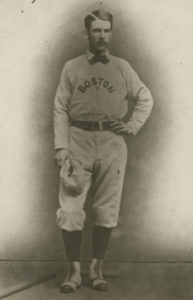


 Right: Levi Veney, ex-slave who lived in Amherstburg, taken at J. D. Burkes’ store, 1898.
Right: Levi Veney, ex-slave who lived in Amherstburg, taken at J. D. Burkes’ store, 1898. 
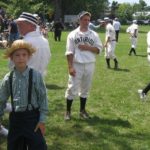
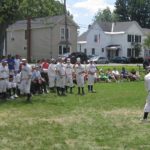
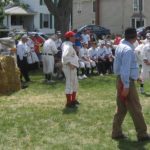

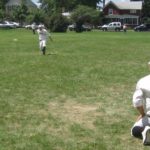

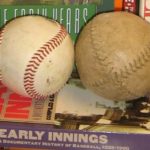

 I have been working thought my review copy of this 632 page paperback published by the Royal Society of Chemistry for the best part of a month now. It is fascinating. Likely the best book on beer I have ever read. Clear, comprehensive and incredibly well-researched, this book contextualized beer and related beverages in the cultural and scientific world contemporary to any given era from pre-historic cave dwellers to the modern era and CAMRA. Yes, insert your joke of convenience now…
I have been working thought my review copy of this 632 page paperback published by the Royal Society of Chemistry for the best part of a month now. It is fascinating. Likely the best book on beer I have ever read. Clear, comprehensive and incredibly well-researched, this book contextualized beer and related beverages in the cultural and scientific world contemporary to any given era from pre-historic cave dwellers to the modern era and CAMRA. Yes, insert your joke of convenience now…